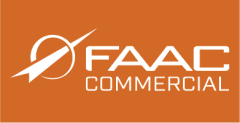Active Learning and Fire Simulation Training
Published

One of the reasons that simulation training can be so much more effective is that it is an inherently engaging active learning opportunity.
All training methods lie on a continuum. At one end are the most “passive” learning methods. Passive teaching methods strictly give information and encourage very little engagement. Examples include lectures, PowerPoint, videos, multiple-choice quizzes, and so on. At the other end, there are extremely “active” approaches. Active methods elicit performance and are inherently more engaging. Examples include open-ended essay questions, creative projects, giving presentations, role-playing, cooperative tabletop exercises, sparring, and similar challenges.
More active learning methods have consistently been shown to outperform more passive learning techniques.
A Case Study in Active Learning with Fire Simulation Training
For years the New York City Fire Department (FDNY) had an unacceptably high rate of accidents involving EMT vehicles. They kept expanding their training program (which relied on “more passive” traditional teaching methods, like lectures on standard cone-course exercises). Even though they expanded their training by more than 60 percent (eventually swelling it to a 52.5-hour course spanning seven days of lecture and 18 range exercises), collision rates remained stubbornly steady.
Then Lt. Rob Raheb —a 30-year FDNY veteran, accident investigator, and certified EVOC trainer —applied simulator-assisted active learning methods to the FDNY program. In a single year this pilot program —focused on situational awareness and proper evaluation of intersections —reduced “t-bone” intersection collisions by 50 percent. Meanwhile, other collision and accident categories (those not addressed in the pilot training program) remained unchanged. According to Raheb, “We hit things we don’t see; we don’t hit things we do see.” Active training in a simulator demonstrably improved situational awareness, effectively expanding what EMS drivers saw at intersections. A corresponding reduction in accidents was almost inevitable.
With this new sim-based active training, Raheb and other instructors consistently saw instruction time decreases and retention increase. (Raheb has since joined FAAC’s “train the trainer” program, to help spread these sim-training best practices further, and share them with trainers and operators in other fields, like public transit and commercial trucking.)
They also noted a decline in recruits needing remedial training:
“All the information given in the lecture could take up to eight hours to disseminate, whereas the practical application, critique, instruction, and having the student re-drive the scenario [in a simulator] could take up to 15 minutes. … Our students started to grasp concepts faster, reducing the amount of time needed behind the wheel. Simulation training gave us the capability to teach knowledge, skills, and judgment—what I call the Triangle of Training. … [W]e were able to greatly reduce the number of intersection collisions that we were experiencing.”
Using Custom Fire Simulation Training to Supercharge Active Learning
Simulators are inherently active learning environments. A good simulator —one where your trainers can continuously tweak every scenario —makes it possible to harness the power of active learning to perfectly suit the challenges and goals of your community, company, and policies. Give us a call when you’re ready to explore what fire simulation training can do for your community.

